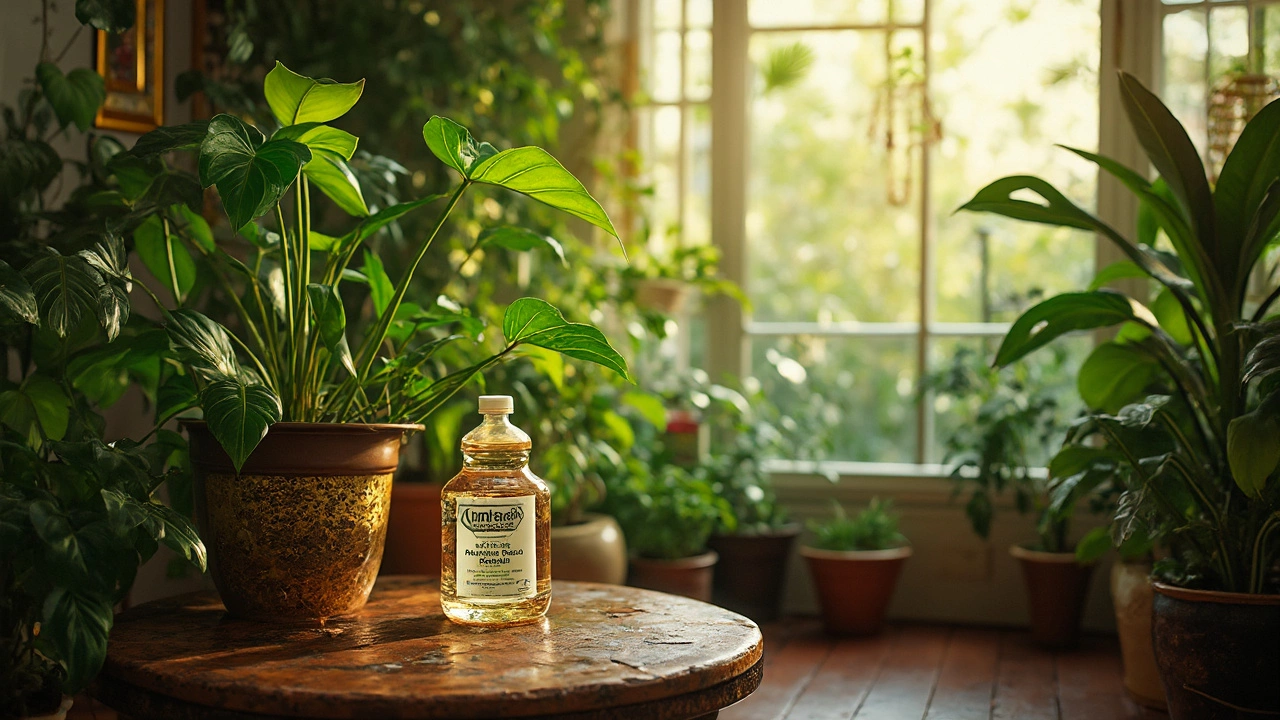Indoor Plants: Your Quick‑Start Guide to Thriving Home Gardens
When working with indoor plants, plants that grow inside homes, offices, or any enclosed space. Also known as houseplants, they bring fresh air, color, and calm to indoor settings. A popular approach is container garden, a flexible way to grow plants in pots, trays, or repurposed containers (aka pot gardening). For reliable watering, many indoor growers turn to drip irrigation, a low‑flow system that delivers water directly to the soil (sometimes called micro‑irrigation). Keeping an eye on soil moisture, the amount of water held in the growing medium (soil humidity) is the third pillar of indoor plant success. Together these ideas form a practical framework you can apply right away.
Why does a container garden matter for indoor plants? First, it lets you match plant size to space limits—no more towering vines in a tiny balcony. Second, containers let you control soil composition, which directly affects soil moisture levels. Using a well‑draining mix of peat, perlite, and compost keeps roots aerated while holding enough water for steady growth. If you’re unsure about watering frequency, a simple finger test—push your finger about an inch into the soil; if it feels dry, it’s time to water. This method works for most common indoor species, from pothos to spider plants.
Automation, Low‑Maintenance Choices, and Soil Health
For busy households, drip irrigation offers hands‑free consistency. A basic timer‑controlled system can feed water in short bursts, mimicking natural rain and preventing overwatering—a common cause of root rot. Pair the system with a moisture sensor and you’ll get alerts when the soil is too dry or too wet, letting you fine‑tune the schedule. This automation not only saves time but also conserves water, an important benefit for eco‑conscious growers.
Choosing the right plant matters as much as the watering method. easy flowers, species that bloom reliably with minimal care (also called low‑maintenance blooms) such as African violets, peace lilies, and begonias, are perfect starters. Their compact size fits well in containers, and many tolerate lower light levels, which is typical for indoor spaces. These plants also signal water needs clearly—wilting or yellowing leaves often indicate a moisture issue.
Soil health goes beyond moisture. Techniques like no‑till gardening, a method that leaves soil structure intact while adding organic matter on top, can be adapted for indoor pots. Simply sprinkle a thin layer of compost or worm castings over the surface every few weeks. This feeds beneficial microbes and improves water retention without disturbing the root zone. When soil becomes compacted, a quick shake of the pot or adding a bit of perlite will re‑aerate it, ensuring roots stay oxygen‑rich.
If your indoor garden’s soil dries out too fast, learning how to rehydrate garden soil, restore moisture to hard, dry growing media, is a handy skill. Lightly mist the soil, cover the pot with a plastic bag for an hour, and the moisture will distribute evenly. For larger containers, a slow‑release watering spike can be inserted, delivering water gradually from a reservoir below.
Putting these pieces together gives you a solid indoor plant system: pick a suitable container, use a well‑draining mix, monitor soil moisture, automate watering with drip irrigation, and select hardy easy flowers that suit your light conditions. With a bit of attention to soil health and occasional re‑hydration, your indoor garden will stay vibrant year‑round. Below you’ll find a curated set of articles that dive deeper into each of these topics, offering step‑by‑step guides, troubleshooting tips, and inspiration to help you master indoor planting.
Is Tap Water OK for Plants? Know What You're Pouring
Ever wondered if your tap water is hurting your indoor plants? This article breaks down what’s really in that glass you pour for your leafy friends and how it can affect them. Get practical tips for making tap water safer for your greens, learn about the minerals and chemicals that could stress your plants, and pick up hacks for when bottled water just isn’t an option. If you love houseplants and want them to thrive, you’ll want to know the real deal about tap water.
Does Hydrogen Peroxide Help Root Rot?
Root rot can be a nightmare for indoor plant enthusiasts, leaving once-vibrant greenery wilted and sad. Many home gardeners swear by hydrogen peroxide as a remedy. This article examines how hydrogen peroxide can combat root rot, how it works, its application methods, and precautions to ensure your plants thrive. Discover if this common household item really holds the key to healthier roots.
- manufacturing
- India
- food processing
- garden tips
- rice cultivation
- government schemes
- balcony garden
- urban gardening
- balcony gardening
- profitable business
- business ideas
- plastic manufacturing
- drip irrigation
- plant care
- steel manufacturing
- sustainable gardening
- startup ideas
- steel industry
- flower gardening
- textile manufacturers







